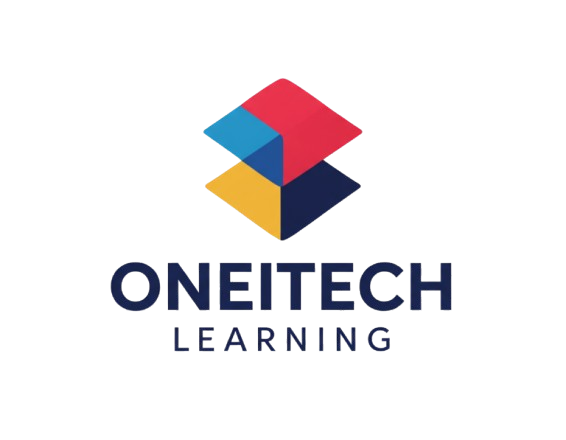VMware vSphere: Install, Configure, Manage [V8]
VMware vSphere
VMware vSphere: Install, Configure, Manage [V8] Certification


- Install and configure ESXi hosts and manage host settings effectively, adhering to best practices for security and administration.
- Deploy and configure the vCenter Server Appliance, manage vCenter settings, and organize inventory objects, with an understanding of permission application and system logging.
- Configure vSphere standard and distributed switches, set networking policies, and understand the differences and applications of each switch type.
- Identify and configure vSphere storage technologies, including VMFS and NFS datastores, and understand iSCSI and Fibre Channel storage components.
- Create, manage, and optimize virtual machines (VMs), deploy VMs from templates and content libraries, and use customization specifications for guest operating systems.

What to train your team? Get a quote
Fundamental Learnings
Training by Top Microsoft-Certified Trainers
1 Day of Live, Instructor-Led Sessions
Latest, Up-to-date Curriculum, Approved by Industry Experts
Access to a Digital Library of Learning Resources
Comprehensive Knowledge of Core Learnings
Blend of classroom sessions and hands-on training
Prerequisites for this Courese
Prerequisites and Eligibility
- System administration experience on Microsoft Windows or Linux operating systems

Schedules
Things Included in the course learning
Course Curriculum
1 Course Introduction
• Introductions and course logistics
• Course objectives
2 vSphere and Virtualization Overview
• Explain basic virtualization concepts
• Describe how vSphere fits in the software-defined
data center and the cloud infrastructure
• Recognize the user interfaces for accessing vSphere
• Explain how vSphere interacts with CPUs, memory,
networks, storage, and GPUs
3 Installing and Configuring ESXi
• Install an ESXi host
• Recognize ESXi user account best practices
• Configure the ESXi host settings using the DCUI and
VMware Host Client
4 Deploying and Configuring vCenter
• Recognize ESXi hosts communication with vCenter
• Deploy vCenter Server Appliance
• Configure vCenter settings
• Use the vSphere Client to add and manage license
keys
• Create and organize vCenter inventory objects
• Recognize the rules for applying vCenter
permissions
• View vCenter logs and events
5 Configuring vSphere Networking
• Configure and view standard switch configurations
• Configure and view distributed switch
configurations
• Recognize the difference between standard
switches and distributed switches
• Explain how to set networking policies on standard
and distributed switches
6 Configuring vSphere Storage
• Recognize vSphere storage technologies
• Identify types of vSphere datastores
• Describe Fibre Channel components and
addressing
7 Deploying Virtual Machines
• Create and provision VMs
• Explain the importance of VMware Tools
• Identify the files that make up a VM
• Recognize the components of a VM
• Navigate the vSphere Client and examine VM
settings and options
• Modify VMs by dynamically increasing resources
• Create VM templates and deploy VMs from them
• Clone VMs
• Create customization specifications for guest
operating systems
• Create local, published, and subscribed content
libraries
• Deploy VMs from content libraries
• Manage multiple versions of VM templates in
content libraries
8 Managing Virtual Machines
• Recognize the types of VM migrations that you can
perform within a vCenter instance and across
vCenter instances
• Migrate VMs using vSphere vMotion
• Describe the role of Enhanced vMotion
Compatibility in migrations
• Migrate VMs using vSphere Storage vMotion
• Take a snapshot of a VM
• Manage, consolidate, and delete snapshots
• Describe CPU and memory concepts in relation to a
virtualized environment
• Describe how VMs compete for resources
• Define CPU and memory shares, reservations, and
limits
9 Deploying and Configuring vSphere Clusters
• Create a vSphere cluster enabled for vSphere DRS
and vSphere HA
• View information about a vSphere cluster
• Explain how vSphere DRS determines VM
placement on hosts in the cluster
• Recognize use cases for vSphere DRS settings
• Monitor a vSphere DRS cluster
• Describe how vSphere HA responds to various
types of failures
• Identify options for configuring network redundancy
in a vSphere HA cluster
• Recognize vSphere HA design considerations
• Recognize the use cases for various vSphere HA
settings
• Configure a vSphere HA cluster
• Recognize when to use vSphere Fault Tolerance
10 Managing the vSphere Lifecycle
• Enable vSphere Lifecycle Manager in a vSphere
cluster
• Describe features of the vCenter Update Planner
• Run vCenter upgrade prechecks and
interoperability reports
• Recognize features of VMware vSphere® Lifecycle
ManagerTM
• Distinguish between managing hosts using
baselines and managing hosts using images
• Describe how to update hosts using baselines
• Describe ESXi images
• Validate ESXi host compliance against a cluster
image and update ESXi hosts
• Update ESXi hosts using vSphere Lifecycle Manager
• Describe vSphere Lifecycle Manager automatic
recommendations
• Use vSphere Lifecycle Manager to upgrade VMware
Tools and VM hardware
Things Included in the course learning
Our Learners Love Us

Recently attended the Scrum Master course. The instructor demonstrated profound knowledge of Agile methodologies and Scrum in particular. Comprehensive course materials, including slides, workbooks, and supplementary readings, have become invaluable resources that I frequently reference in my daily role.

This is an amazing training ecosystem. They had assigned individual relationship managers who not only did the tactical things of reminding of sessions etc, but they also connected me with people who were experts for career guidance. This is the best example of customer delight - you not just engage clients but delight them! Highly recommended for Agile related courses.

I did a PSM-1course from One iTech and it was truly an enriching experience. The trainer was very good and has full expertise on the subject. He was quite interactive and engaging, always ensured everyone understood the concepts and fundamentals of Scrum Agile. He kept revising and recapping all important concepts throughout the session during these two days.

One iTech is very professional in handling entire process. They make sure all the support is provided during training and afterwards. I have done 2 courses with them and both times it was a great experience. The workshop was a well-organized event. The trainer was an expert which made it a valuable training.

What will I learn in this course
Output of this Course
- Understand the fundamentals of virtualization and how vSphere integrates within the software-defined data center and cloud infrastructure.
- Install and configure ESXi hosts and manage host settings effectively, adhering to best practices for security and administration.
- Deploy and configure the vCenter Server Appliance, manage vCenter settings, and organize inventory objects, with an understanding of permission application and system logging.
- Configure vSphere standard and distributed switches, set networking policies, and understand the differences and applications of each switch type.
- Identify and configure vSphere storage technologies, including VMFS and NFS datastores, and understand iSCSI and Fibre Channel storage components.
- Create, manage, and optimize virtual machines (VMs), deploy VMs from templates and content libraries, and use customization specifications for guest operating systems.
- Perform different types of VM migrations, understand the role of Enhanced vMotion Compatibility, and manage VM snapshots and resource allocations.
- Deploy and manage vSphere clusters enabled for DRS and HA, understand cluster monitoring, and configure clusters to ensure high availability and fault tolerance.
- Manage the vSphere lifecycle, including enabling vSphere Lifecycle Manager, updating hosts and software, and ensuring compliance with cluster images.
- Operate vSphere Update Planner, run prechecks, and update VMware Tools and VM hardware using vSphere Lifecycle Manager automatic recommendations.
- These objectives ensure that upon completion of the VMware vSphere: Install, Configure, Manage [V8] course, students will be well-equipped to manage a vSphere infrastructure for organizations of any size.
Who Should Enroll Now Azure AI Fundamentals Course
Who is this course for
- Systems administrators and engineers responsible for managing vSphere environments
- IT professionals working with ESXi hosts and vCenter Server appliances
- Network engineers looking to understand vSphere networking configurations
- Storage administrators tasked with managing vSphere storage technologies
- Virtualization specialists focusing on deploying and managing virtual machines
- Data center professionals aiming to optimize resource allocations in virtual environments
- Technical support staff involved in maintaining and troubleshooting vSphere setups
- IT managers overseeing virtual infrastructure
- Cloud administrators working with vSphere as part of cloud infrastructure
- IT professionals seeking VMware certification in vSphere management








